The Daily Scrum, also known as a “stand-up meeting” in the context of the Scrum methodology, is a daily meeting of the scrum team. This is a short meeting (usually 15 minutes long) where the Scrum team meets to discuss the progress of the work.
Team members share what they’ve accomplished since the last meeting, what they plan to do next, and if they’ve encountered any impediments. While staying focused on the specific Product Backlog items planned for the current sprint.
The goal is to promote communication, collaboration, and rapid problem solving, contributing to project transparency and agility.
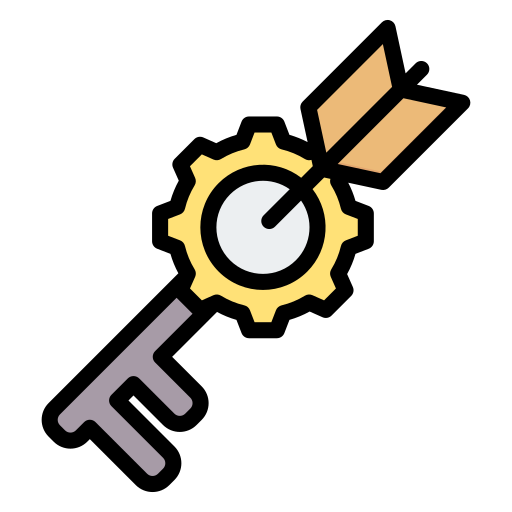
Key Points
This article will explore several important aspects: The goals of the Daily Scrum, the people involved in this daily meeting, as well as the schedule and frequency, best practices to maximize its effectiveness, a RACI matrix to clarify the responsibilities of each participant, and finally, we will conclude with recommendations and tips to remember.
![]() Key points
Key points
This article will explore several important aspects: The goals of the Daily Scrum, the participants in this daily meeting as well as the timing and frequency, best practices to maximize its effectiveness, a RACI matrix to clarify the roles of each member, and we will conclude with tips and tricks to keep in mind.
Understanding the Role of Daily Scrum?
The main goals of a daily scrum are:

Visibility
Give visibility to the entire team on all work at regular intervals.

Communication
Improve communication between team members

Removing Barriers
Anticipate, identify and remove barriers.

Productivity
Increase speed and flexibility in development.

Speak up
Give everyone a chance to speak, and take turns.

Start your day off right
Best way to start the day off right
When to do Daily Scrum?
The Daily Scrum, or daily meeting, should take place at a fixed time each day, preferably at the same time. Here are some recommendations for when you might want to schedule a Daily Scrum:
Morning

Morning
Many Scrum teams hold their Daily Scrum in the morning, for example, at the beginning of the workday. This allows team members to sync before starting their tasks for the day.
In the early afternoon

Some teams prefer to hold their Daily Scrum in the early afternoon, after lunch. This gives them an opportunity to discuss progress in the morning and plan activities in the afternoon.
At the end of the day

End of day
For teams that work staggered hours or in different time zones, the Daily Scrum can be held at the end of the day. This allows team members to share their updates before they leave work.
When it's convenient for the team
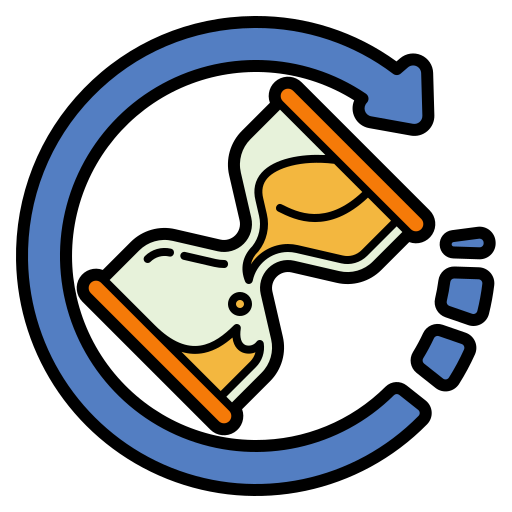 The time of the Daily Scrum should be chosen in such a way that it suits the entire team, taking into account the preferences and constraints of each member.
The time of the Daily Scrum should be chosen in such a way that it suits the entire team, taking into account the preferences and constraints of each member.
No matter what time you choose, it’s essential that the Daily Scrum time remains consistent so that team members can plan accordingly and ensure they attend regularly.
The location can vary depending on the team, but it’s essential to ensure that it’s consistent and that all team members can attend, whether they’re in the same office or working remotely.

Important!
The Daily Scrum becomes more effective when it takes place in front of the Kanban board, allowing for visual observation of progress. Developers update the status of tasks by moving them forward on the board.

Agility: More Reading
Who Attends the Daily Scrum?

Scrum Master
Facilitator
- The Scrum Master makes the meeting easy, making sure it stays short and focused.
- He takes note of the “impediment” issues mentioned by the members of the development team.
- He avoids giving “ad hoc” solutions The stand-up meeting is not made to solve problems.

Product Owner
Sponsor
- The Product Owner can be present to check on the progress of the development team.
- They can answer specific questions about the needs or priorities of the product, but they don’t usually intervene in the stand-up meeting.

Scrum Team
Implementers
- They briefly share what they’ve accomplished since the last daily scrum.
- They explained what they planned to do between now and the next meeting.
- They identify any obstacles or problems they face, if any.
The terms “sheep” and “chicken” in the context of Scrum are used to describe different levels of involvement in a project or within a Scrum team. These terms are often used humorously and metaphorically to distinguish between those who are directly responsible (sheep) and those who are only indirectly involved or interested (chickens).
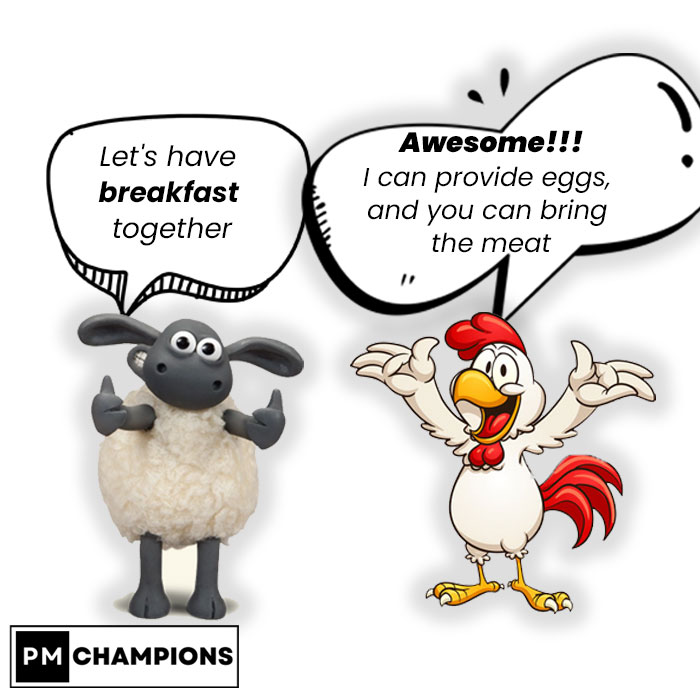

| Action / Actor | Dev | Scrum Master | Product Owner | Team |
|---|---|---|---|---|
| Share updates on the work done since the last meeting. | R | A,I | ||
| Share plans for work to be done before the next meeting. | R | A,I | ||
| Report any obstacles or problems that hinder the progress of the work. | R | C | A,I | |
| Facilitate the meeting and ensure that the timing is respected. | R | A,I | ||
| Share specific information about sprint goals or priorities. | R | A,I | ||
| Ensure that the Daily Scrum meeting is effective and serves its purpose. | C | R,A,I |
Best Practices for Effective Daily Scrum?
Daily Scrum is an essential part of Scrum that fosters communication, transparency, and collaboration within the development team.
To carry it out correctly, the following principles must be observed:

Accuracy and Conciseness
The Daily Scrum must take place standing up. This stand-up approach has several goals and benefits:
- Brevity : Standing encourages brevity. This keeps the meeting as short as possible, usually limited to a maximum of 15 minutes.
- Focus on the basics : The meeting aims to answer three main questions: “What has been accomplished since the last meeting?”, “What will be done between now and the next meeting?”, and “What obstacles stand in the way?”
- Elimination of distractions : Standing reduces potential distractions, such as the use of electronic devices or loss of concentration.
- Creating a daily ritual: Standing up is a daily routine, occurring at the same time and place each day. This helps to establish discipline and maintain a steady pace.

Frequency & Schedule
The Daily Scrum is held every day at a fixed time agreed upon by the development team. It takes place at the same time and place every day, to establish a predictable routine.

Facilitation
The role of the Scrum Master in the Daily Scrum is primarily focused on facilitation and supervision, while following the key principles of Scrum:
- Skid Response : Carefully monitor the progress of the meeting and the progress of the team’s work. If they notice that the team is deviating from their goal for the current sprint, they can step in to ask questions or offer advice on how to realign the team with their goals.
- Enforce timing : He makes sure that the Daily Scrum stays brief and focused. The meeting should last no more than 15 minutes. If the team starts to dwell on a topic or discuss it in depth, the Scrum Master can step in to remind people of the importance of time and encourage the meeting to move quickly.
- Facilitation : He makes sure that each member of the team has a voice and that no one monopolizes the meeting.

Trouble
If a team member reports an obstacle or issue, it’s important to note it for later resolution. The Scrum Master can help identify these obstacles and plan actions to overcome them.
It is imperative that you do not try to solve them immediately! Some issues can be the subject of actions to plan for in the next sprint planning.
 Tips and tricks
Tips and tricks

Solidarity
The team’s goal must be to unite in order to succeed→ This is not the place for settling scores

Preparation
The Scrum Master must prepare well for the Daily Scrum by consulting the progress of the past day.

Timer
Use a timer to make sure you respect the 15 minutes
Use a “talking stick” to regulate and pace speech

Focus
Don’t deviate into side conversations or try to solve problems → you just have to spot them to solve them later

Complement
Dig deeper: the Daily Scrum according to Scrum.org


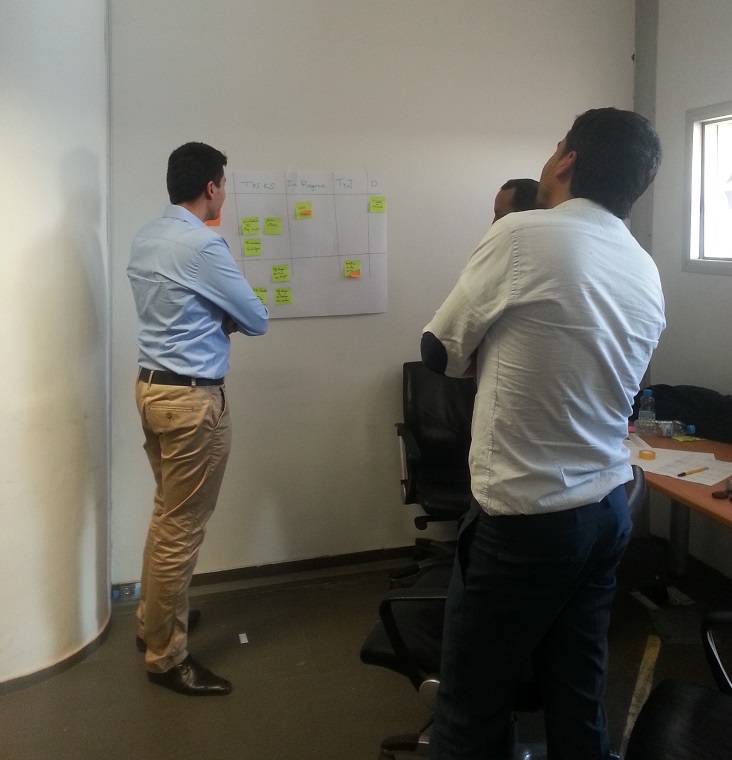


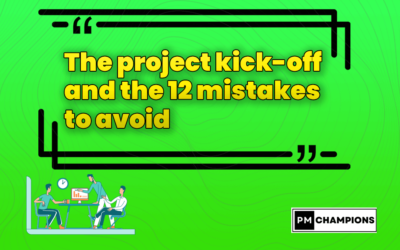



0 Comments